Environmental Transition and Inequalities in South-East Asia (ETIS)
Objectives
The objective of the ETIS project is to contribute to building the next generation of policymakers for the environmental transition, as well a network of leading sustainability science experts in South-East Asia. It aims at building local interdisciplinary scientific knowledge, guide evidence-based public policies, and foster scientific and policy regional coordination that ultimately bring about the socioeconomic conditions for ecologically resilient economies in Southeast Asia. Drawing on the lessons drawn from 15 years of experience in research and capacity building programs, this six-yearproject aims to contribute to the design of a groundbreaking, virtuous and sustainable model of development for the region.
Rising inequalities and accelerating environmental degradations are two of the most significant challenges of the twenty-first century. The current COVID-19 pandemic has illustrated how ecological destruction can lead to unequal health and socio-economic impacts. In reverse, inequalities, which have been continuously growing over the last 40 years, are themselves a serious obstacle to the social cohesion necessary to undertake an ecological reconstruction. This is particularly the case in Southeast Asia, where the new middle class has embraced a consumerist way of life while those who struggle to cover their basic needs remain the majority. Such social disparities leave little political space for behavioral or institutional change.
The 2020-2030 decade will determine if the ever-growing impacts of human activities on the earth system can be reoriented towards a safe operating space. International coordination has attempted to define overall targets through unprecedented efforts such as the UN Sustainable Development Goals, the climate-related objectives of the Paris Agreement, or the next COP15 on biodiversity in Kunming in 2021. In Southeast Asia, where vulnerability to environmental risk is considered among the highest in the world while economic growth has been very robust in the latest globalization period, the interactions between inequalities, environmental degradations and uncertainties with respect to future growth prospects call for a revamping of development strategies at the regional level within the current decade. A first step is to let a generation of sustainability science enlightened experts and policymakers emerge.
Context
The Environmental Transition and Inequalities in South-East Asia (ETIS) project targets five Southeast Asian countries Cambodia, Laos, Myanmar, Thailand and Vietnam (hereafter named “ETIS countries”). The selection is justified by shared economic, geopolitical and geographic characteristics.
First, economic growth, stimulated by globalization, has followed a common trajectory in the ETIS project countries, all member states of the Association of Southeast Asian Nations (ASEAN).
Even though all the countries have not grown at the same pace and are not at the same level of economic development, they show a common trend of high to very high growth rates in the last decade. Their insertion in the global economy over the last decades has created tremendous pressure on natural resources, exacerbated inequalities (de Koninck, Rousseau, 2013), while also allowing for the emergence of a new and fragile middle class (Lagrée, 2011, 2012). Consequently, all ETIS countries face urgent pollution and environmental degradation problems, in both urban and rural areas, which affect populations unequally (Cushing et al., 2015).
Secondly, from a geopolitical perspective, the ETIS countries – some of which used to ignore or oppose each other – are now learning to live together, and a new equilibrium is being established both inside the region and with neighboring nations.Considering their proximity to China, the five countries share common geopolitical constraints and opportunities with regards to this emerging superpower, which involves a delicate balance of imitation and autonomy. Responding to the challenges posed by this new regional evolution would imply progressively transforming a “balkanised” region into a common geopolitical zone that fosters a new form of collaborative economic development. In a way, the Mekong river would play a pivotal role in this peaceful integration. It is also at the core of the inequality-environmental degradation nexus: more than 20 hydroelectric dams in the process of being constructed or investigated in southern China, in Laos, on the Laos-Thailand border, and also in Cambodia without too much attention to the externalities generated on neighboring countries, especially as huge climate impacts are looming before 2050. Transport and energy projects along this “development corridor” favor the “connectivity” of these ASEAN countries while putting ecological equilibria in danger (Tertrais, 2014; Lagrée 2016, 2018).
Indeed, and it is the third point, these countries share similar ecosystems, such as mountains, forest, mangroves, seashores and, of course, the Mekong Basin. These shared biotope characteristics have contributed to create an area that has a semblance of cultural and social unity among the diversity, sometimes called “Zomia” (Scott, 2009). This social diversity is embedded into a unique ecosystem diversity, heavily threatened by deforestation, illegal logging but also industrial farming. A quarter of world bats live in this area, where tropical forests have been destroyed in the latest decade (Kingston, 2013). The capital intensity of deforestation operations suggest that globalized industries are a key cause to this dangerously increasing contact between humans and wildlife that produces some of the conditions for the emergence of pandemia such as COVID-19 (Austin et al., 2017). In the wake of the 2019 IPBES report and the incoming 2021 Kunming conference (COP15), biodiversity will enter the top of political agendas for the years to come. Trajectories of biodiversity restauration or protection a part of a broader understanding of social and economic sustainability conditions. In a similar fashion, the expected consequences of climate change define a shared eco-geography in the 21st century (see the latest results of the CORDEX-SEA program).
Such interdependencies make a strong case in favor of a regional approach to long-term development strategies consistent with both social and environmental sustainability.

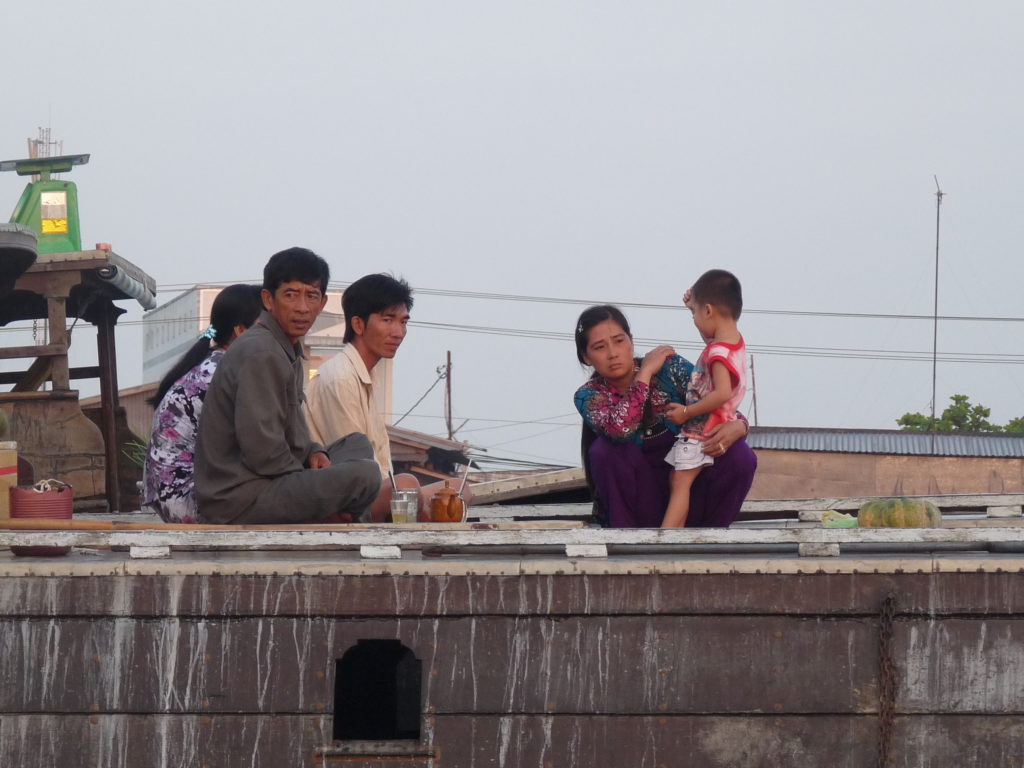
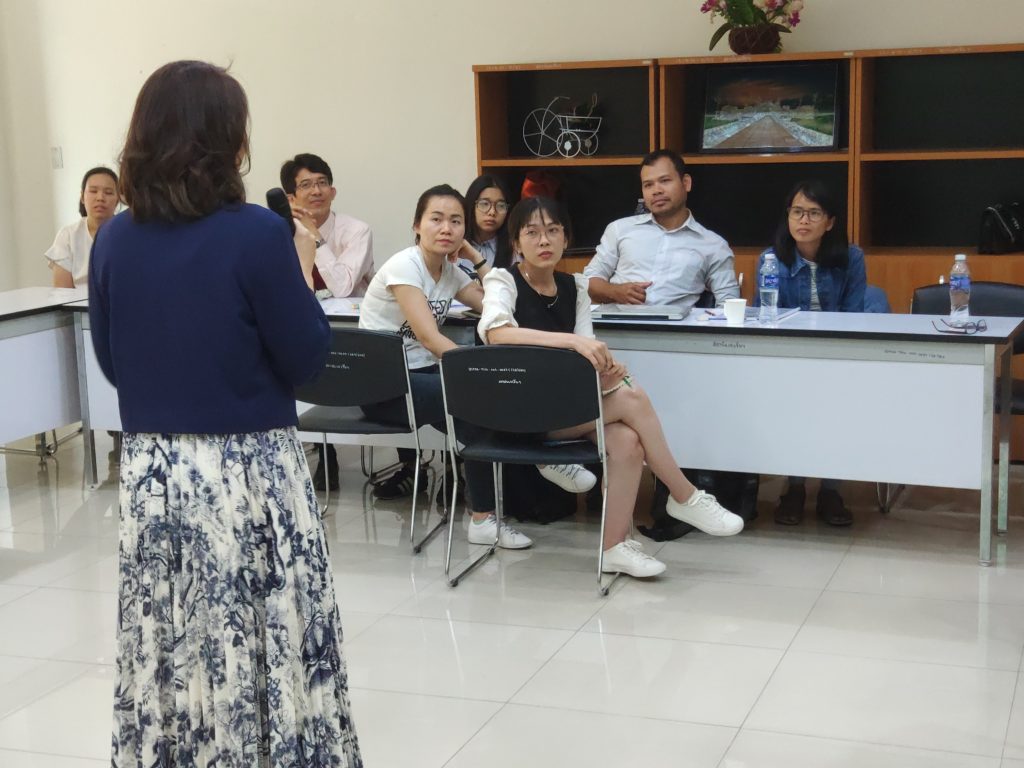
Rationale
Environmental transition is understood here as the multiple socio-economic processes that could contribute to put the earth system back into a safe-operating space (Rockström et al., 2009).
The general consensus for action is broad, but there is much less clarity around the transformations needed to cope with complicated, multi-scale and interrelated issues such as global warming, loss of biodiversity, pollution of ecosystems, disruption of biogeochemical cycles which contribute to trespassing planetary boundaries. In other words, there is no consensus about what concrete socio-economic transformations can or should be achieved to tackle these multiple ecological threats.
Inequalities dynamics are deeply linked with ecological transformations. As stated in Hamman et al. (2018), most research is one-directional, i.e., it focuses on the specific effects of social inequalities on the environment or vice-versa (De Laubier Longuet, 2019). It fails to take into account a more complex understanding of how inequality and the state of the ecosystems interact with each other. Consequently, it is fundamental to produce knowledge that will inform a profound transformation of socio-economic systems, notably by including poverty and inequality in sustainable development agendas (IPBES, 2019:31).
ETIS countries are a very emblematic case at hand: socio-economic inequalities related to income, employment, education, access to land, as well as age and gender, are increasingly associated with unequal exposure to environmental risk factors (Bangalore et al., 2016). These factors represent direct threats to people’s lives – landslides, flooding, air and water pollution, etc. – and contribute indirectly to the degradation of agricultural land and the propagation of diseases (Narloch and Bangalore, 2018). Environmental risk factors are not solely generated by global climate changes. They are also
– increasingly – a direct consequence of demographic and economic growth pressure on ecosystems. This is particularly visible throughout the Mekong River Basin. As shown in Inghals et al. (2018), the Mekong region has been radically transformed in the last ten years by the pace and scale of land acquisitions linked to foreign and domestic investments. This has led to growing inequalities, rural unrest, and a trend towards the commodification of social interactions, contributing to a transformation of traditional as natural systems (Center for Khmer Studies, 2008; Schoenberger et al., 2017).
If the focus of this project will remain on ETIS countries, it will always play with the diversity of spatial scales at hand. As the IPBES (2019:9) report states: “A key constituent of sustainable pathways is the evolution of global financial and economic systems to build a global sustainable economy, steering away from the current limited paradigm of economic growth. That implies incorporating the reduction of inequalities into development pathways, reducing overconsumption and waste and addressing environmental impacts such as externalities of economic activities, from the local to the global scales.” The spatial scope of analysis cannot thus remain purely national (Ingalls et al., 2018b), but it cannot even remain regional and should include all drivers from globalization dynamics.
Proposed approach
This six-year project will tackle issues surrounding environmental transition and inequalities in Southeast Asia in four ways.
The first is by undertaking an ambitious and extensive production of scientific knowledge on the different dimensions of the inequality-environmental transition nexus. This effort will result in a critical mass of knowledge to contribute to a deeper understanding of societal changes necessary for the success of the environmental transition. The project falls under the field of Sustainability Science, which focuses on examining the interactions among human, environmental, and engineered systems, to address the complex challenges threatening the integrity the planet’s life support systems, such as climate change, biodiversity loss, pollution and land and water degradation. This science of interactions, defined more by the questions it addresses than by any one scientific discipline, focuses on understanding the relationships of ecological and social phenomena studied at all scales, using a methodology based on a systemic approach of the humanity-environment-society triad (Bettencourt and Kaur, 2011; Kates 2011). Interdisciplinary by nature, Sustainability Science also encourages scientists to work with communities and to develop solutions for and with all stakeholders, “(…) Human-environment systems remain highly complex and difficult – or impossible – to map fully. Causes and effects are often hard to distinguish and context dependent. Stakeholders frequently disagree about problems and solutions. In such cases, decision makers must navigate ways forward based on careful consideration of risks, uncertainty and issues of social justice. Precautionary measures or interventions may be advisable even if cause-and-effect relationships are not fully established.
In response to such challenges, the growing field of sustainability science has adopted a variety of useful approaches – such as co-production of knowledge and hands-on testing of interventions with local stakeholders – capable of aiding needed transformations (Messerli et al. 2019).
For this first component, the main research questions are to be defined within the ETIS Scientific Unit (see organigram below). Research could focus on, among other themes, the fragile and complex ecosystems of river basins, the accelerated transition of Asian cities and the crucial issues of ecological, economic and social sustainability of urban policies, “one-health” and the role of biodiversity conservation in mitigating infectious diseases, regional financial macroeconomic dynamics for an ecologically resilient region. To identify research themes, the ETIS Scientific Unit will leverage the results of research undertaken as part of the project « Inequalities and Environmental Changes Nexus in the Mekong River Basin » (2019-2020), which aims at conducting a systemic review of existing literature on the subject and mapping inequalities and environmental changes (Huynh et al, forthcoming).
The second and third components are the core elements of an innovative way of doing research.
First, it is about systematically linking researchers and their institutions to other stakeholders
– policymakers, media, civil society, private sector, etc. This linkage is expected to enhance the impact of scientific findings through their direct integration, simultaneously with their publication, into concrete actions, collective practices and public policies. In line with Sustainability Science, the project adopts an approach to production of knowledge that is based on the connection between scientists and societal stakeholders who are directly concerned by and have stakes in the foreseen outputs.
The concept of “embodied research”, defined in Horlings et al. (2019) as “a transformative practice in itself, […] rooted in sustainability practices and values (e.g. reciprocity, inclusivity, transparency, care, etc.)”, is promoted through the undertaking of PhDs integrated to an ambitious framework of activities. A new PhD profile, baptized PhD 4.0, will be designed. Connected and engaged, researchers will combine innovative, non-conventional research methods with the requirements of international scientific excellence.
PhD 4.0
By analogy with the concept of Industry 4.0, PhD 4.0 is based on a new way of organizing the production of knowledge, where the connection between the researcher and society is central. Interactions between producers and users of knowledge accompany the scientific activity since the definition of the research question. Supported by a team of trainers and integrated into an adhoc system, the doctoral student 4.0 doubles his scientific learning with skills in communication, presentation, negotiation, and advocacy. He becomes a scientist and a social actor committed to the promotion of rationality and the defense of a science at the service of collective well-being.
Second, based on the connections and network consolidated during the implementation of research, it is essential to go one step further and make the use of the knowledge produced possible. This implies an important work on the format and visualization that scientific knowledge takes, carried out so that the results of research are understood beyond academic circles alone. The organization of regular and specific events for dialogue and exchange between scientists and other stakeholders will also enhance the impact of the findings. It is by supporting researchers and their institutions in their efforts for dissemination, and using modern means of communication that scientific progress will be considered by decision-makers at its true value, i.e. indisputable knowledge, resulting from rigorous work, demonstrated and validated by the scientific community.
The fourth component is an intense capacity building effort targeting higher education and research institutions in Southeast Asia, to ensure leverage effects and start a virtuous cycle leading to the science-based monitoring of the environmental transition. The fundamental principle guiding the project at this level is the belief that good research – that is, research that solves, or helps to solve, problems – requires skills that go far beyond scientific skills. Project writing, communication, management of financial and human resources, legal and ethical issues, communication and outreach are all essential elements for embodied research. And yet, these skills, which are peripheral to the purely scientific activity of research, are often ignored in higher education and research institutions in Southeast Asia.
Communication and knowledge management are central to the project methodology. The research projects implemented will invest in communication activities from their conception to their completion. The research methodologies will be formulated taking into account non-academic stakeholders and will rely on an extended peer community to monitor the quality of the research process and results (Ravetz, 2011). Specific work will be carried out to support researchers in their extension efforts. The knowledge produced will be systematically shaped to be understood and disseminated beyond the academic sector, fueling societal debates and directing the processes of change towards environmental transition.
As a whole, ETIS represents a unique opportunity for higher education and research institutions to position themselves as actors of change by enabling science to influence collective decisions. They will be integrated into an international network committed to a responsible and pragmatic approach to research, leading to connected science. The participation of non-academic actors in the formulation, monitoring and political and economic valorization of the findings will ensure the development of close links between partners, producers and seekers of scientific expertise.
The long-term impact of the project will stem from the concrete and visible expected outcomes, both in terms of new knowledge and capacity building. The project will bring about profound changes in the way research is carried out and in the use of scientific results by economic and social actors, highlighting their usefulness and relevance to societal challenges. The connected science approach, and the pilot concept of PhD 4.0, can be replicated in other contexts. Finally, the conclusions of the project, distilled in a white paper which will serve as a roadmap to environmental transition, will contribute to the identification of solutions to the most urgent socio-environmental problems faced by humanity.
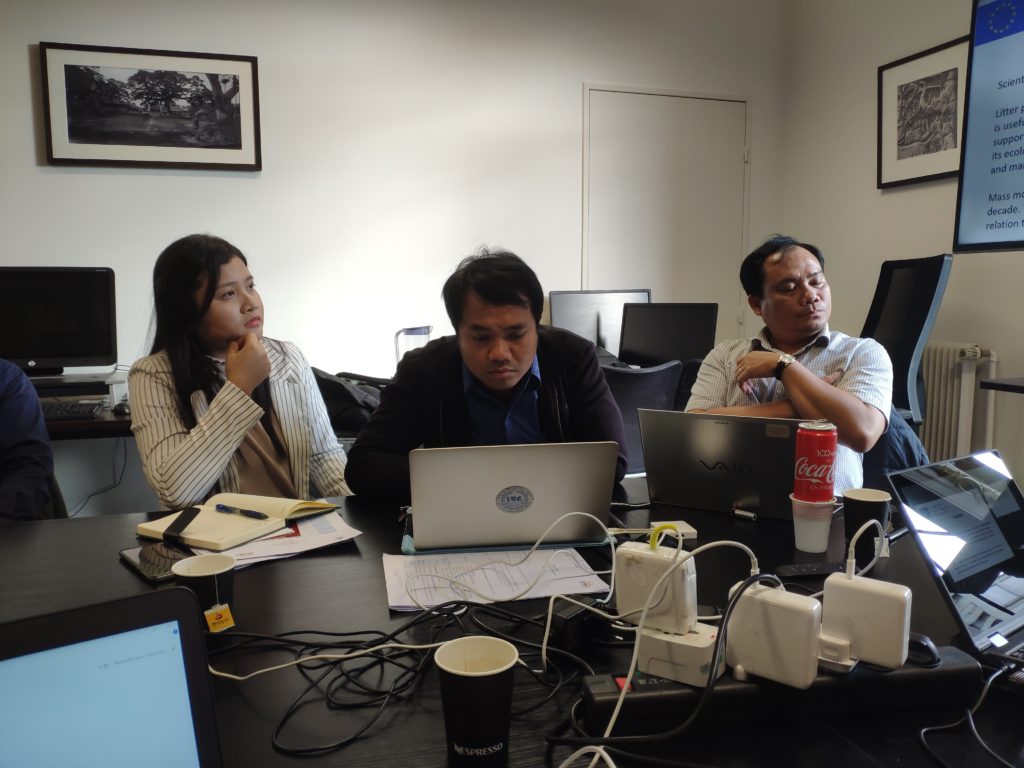
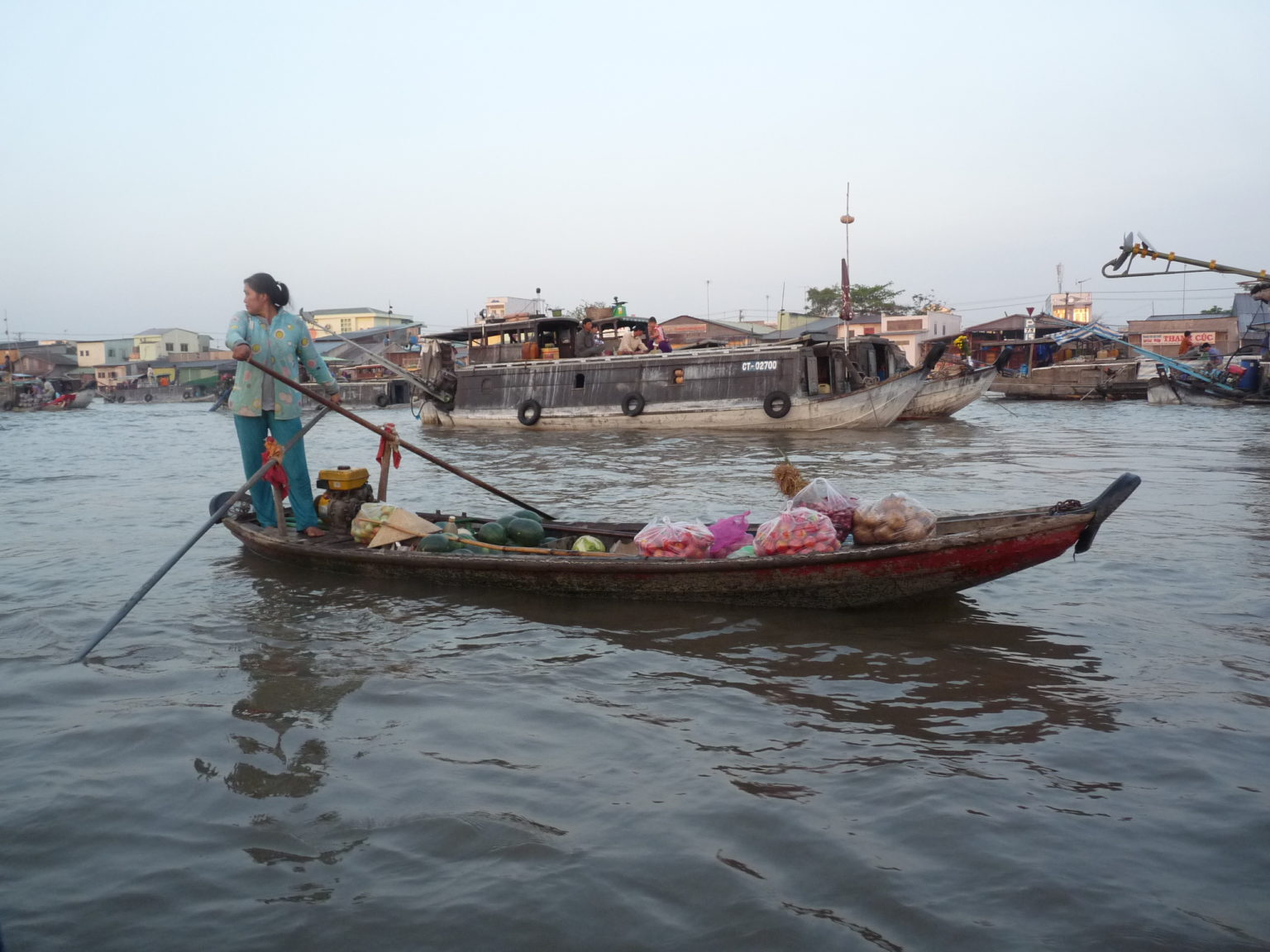
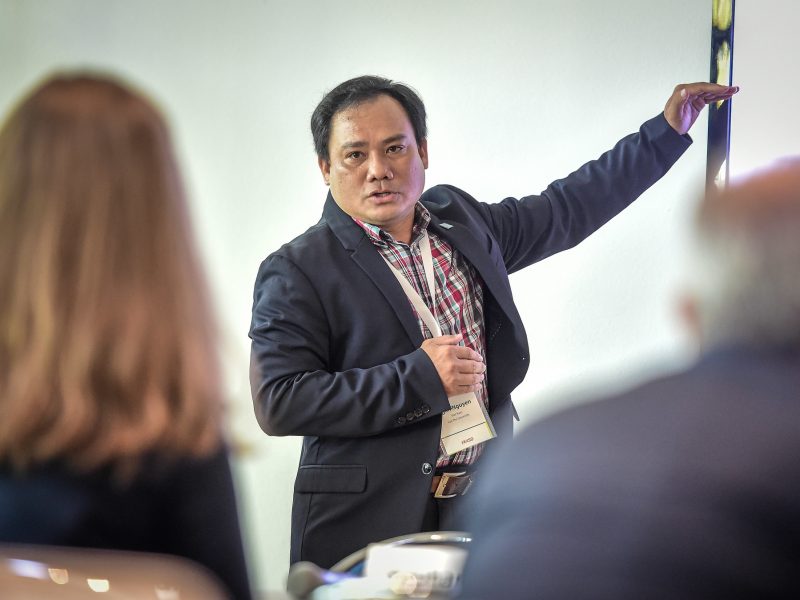
Foreseen activities
I. Knowledge Production
→ Establishment of a high-level international scientific committee, which will be in charge of the formulation of the project’s overarching research questions and the formulation of the PhD research topics. Will accompany the whole project.
→ International recruitment of PhD candidates: in order to reach a critical mass, the project will recruit 30 candidates, coming from the five targeted countries and also from Europe and Canada (maybe in the proportion of 2/3-1/3).
→ International recruitment of 90 Master’s degree candidates.
→ Demand-driven call for projects at the end of the project addressed to PhD holders.
Outputs: Scientific papers; conferences and seminars; PhD thesis and Master’s degree dissertations.
II. Connection to society and networking
→ Establishment of communication team dedicated to engagement and integration of non-academic participants into the project. Will implement activities, such as:
→ Deployment of communication campaigns;
→ Rewriting, translation and editorial support;
→ Conducting workshops and site visits (laboratories and factories);
→ Science writing and popularization (posters, articles, press kits and releases, etc.);
→ Creation of media and content for technical training.
→ Writing of a final collective contribution based on the capitalization of all of the knowledge produced within the project, constituting a white paper on how to implement the environmental transition in a context of socioeconomic inequalities.
→ Writing of annual learning papers.
Outputs: social media and communication material; policy briefs; learning papers; local scientific events; final white paper on Environmental Transition and Inequalities in Southeast Asia.
III. Communication and dissemination
→ Two regional fora for academic and non-academic actors to debate issues related to environmental transition and inequalities, resulting in collective position papers.
→ Creation of communication media (print, web, oral presentation slides, etc.);
→ Creation of illustrations, infographics, photos and videos;
→ Creation of websites, SEO;
→ Community management;
→ Press relations management;
Outputs: Advocacy / collective position papers; multi-stakeholder working groups; communication and dissemination material (including virtual).
IV. Capacity building
→ Webinars and training sessions for PhD and Master’s degree candidates on relevant topics such as genesis of research; writing a scientific proposal; implementation of research; management of human and financial resources in research; ethics in research; intellectual property issues; teaching innovation; writing papers; communication and dissemination.
→ Three regional summer schools organized in a closed environment to ensure total immersion of participants, intercultural exchanges, and networking. Each summer school will address a specific topic in a multidisciplinary fashion, and will combine plenary sessions with small-group workshops that draw on proven pedagogical principles of adult learning to ensure the effective transfer of knowledge and tools.
Outputs: 30 young researchers and 90 potential PhD candidates integrated into an active regional network of academic and non-academics organizations and connected to the best higher education institutions; critical mass of young professionals able to use modern scientific methodologies and tools in their professional activities.
ORGANIZATION and PLANNING
The implementation of the activities requires a wide diversity of skills and means, which will be obtained through the mobilization of different organizations and institutions. The governance of the project is planned as follows:
The Steering Committee is composed of representatives of the different stakeholders and funding agencies. Its role is to provide advice, ensure delivery of project outputs and the achievement of project outcomes.
The Scientific Unit, one of the innovative components of ETIS, is composed of high-level scientists involved in environmental transition and inequalities research. Scientists composing this unit will not only monitor and advise the managers of the program, as in a standard scientific committee.
They will contribute to decision-making, being at the same level of responsibility than the managers. Initially, the Scientific Unit will be responsible for the cross-cutting analyses that will serve the basis for defining doctoral research topics. It will then accompany all the scientific activities carried out within the framework of the project. Finally, it will also be responsible for drafting the white paper.
The Management Unit is composed of two complementary entities: the Center for Research and Expertise on Education and Development (CREED) based in Bordeaux (France) and its extension in Asia based in Hanoi/Ho Chi Minh City (Vietnam). CREED France is responsible for the establishment and operationalization of the governance bodies (Steering Committee, Scientific and Management Units) and for guaranteeing efficient decision-making processes. Through the implementation of Monitoring Evaluation and Learning (MEL) activities, CREED France ensures the overall coherence of the project and achievement of objectives. CREED Asia supervises the implementation of all activities in Southeast Asia; this unit is responsible for coordination of all stakeholders – higher education institutions, private organizations, public institutions and international organizations.
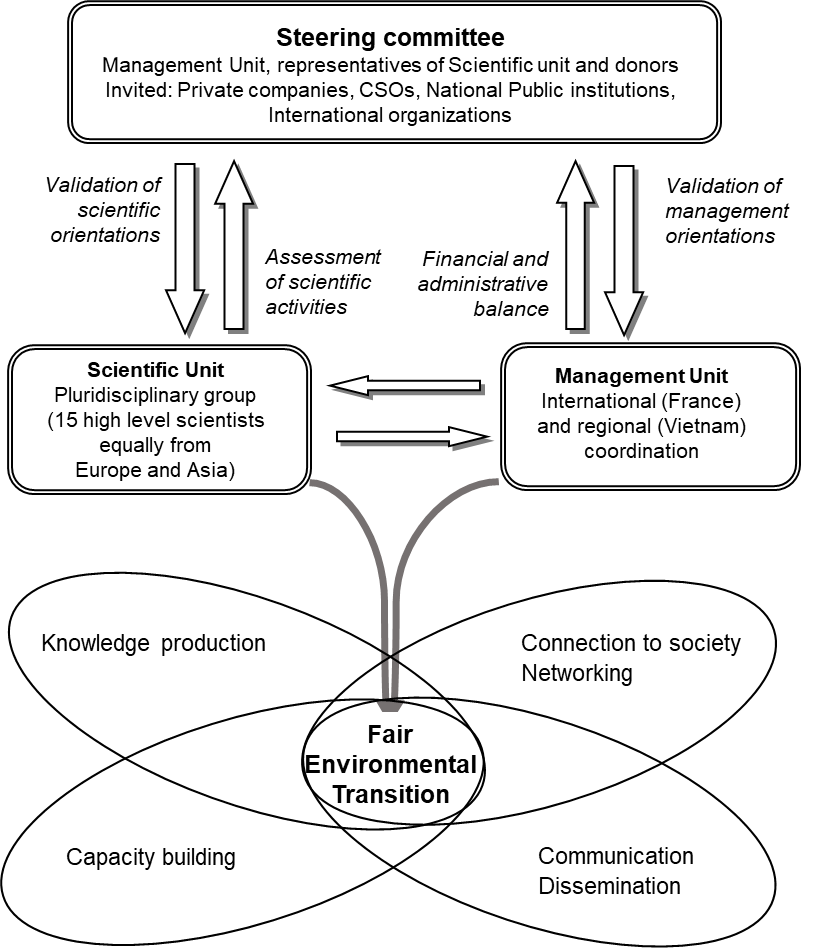
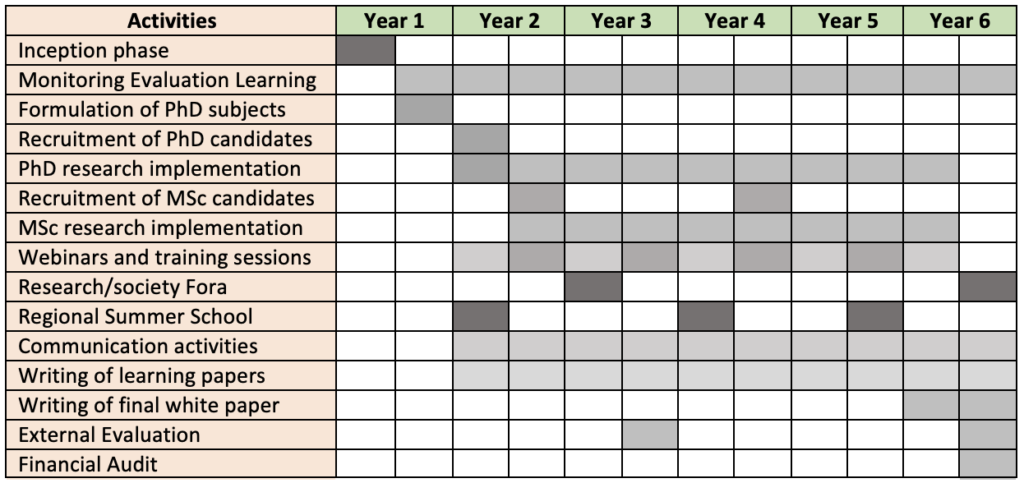
GENESIS OF THE PROJECT
This proposal draws on 15 years of experience in designing and delivering research and training programs in science in South-East Asia. In particular, the following projects have informed the design of ETIS:
→ « Support to Research on the Issues of Economic and Social Transition in Vietnam » funded by the French Ministry of Foreign Affairs (2005 – 2009). This project included a two-part action plan. The first part was devoted to supporting 10 joint French-Vietnamese research projects, including 10 PhD theses. The second was implemented starting in 2007 as a summer school, under the name of « Tam Dao Days (JTD) » (tamdaoconf.com), with the overall objective of « training Vietnamese scientists to new methodological approaches and scientific networking ». Its success as an innovative platform for capacity building led a network of academic and non-academic actors to scale up the project regionally and internationally (2009-2018). In particular, the Global Development Network (GDN) provided co-funding to extend the project to Cambodia, Laos, Thailand, Myanmar and Madagascar.
→ « Strengthen the Production, Management and Outreach Capacities of Research in the Field of WAter and NAtural Resources in South-East Asia » (WANASEA), supported by the European Commission through Erasmus + funding (wanasea.eu) (2017-2020). This multi-stakeholder consortium was built on the JTD summer school format to build research capacity in Cambodia, Thailand and Vietnam. In July 2019, at a meeting of the ASEAN Water Platform (organized as part of WANASEA) in Phnom Penh, the consortium started the process of defining the present project, elaborating a “Problem Tree” that served as the first diagnostic on the targeted issues at regional level.
→ « Inequalities and environmental changes in the Mekong River Basin« , funded by AFD (2019-2020). Developed in synergy with WANASEA, this research project proposes a systematic analysis of the inequality-environmental change nexus in the Lower Mekong River Basin Region and aims at building a scientific base for policy action as well as identifying uninvestigated research questions.
Austin, K. G., González-Roglich, M., Schaffer-Smith, D., Schwantes, A. M., & Swenson, J. J. (2017). Trends in size of tropical deforestation events signal increasing dominance of industrial-scale drivers. Environmental Research Letters, 12(5), 054009.
Bangalore, M., Smith, A., & Veldkamp, T. (2016). Exposure to floods, climate change, and poverty in Vietnam.The World Bank.
Bettencourt, L. M. A., Kaur, K. (2011). Evolution and Structure of Sustainability Science, Proceedings of the National Academy of Sciences of the United States of America-PNAS, December 6, 108 (49), 19540-19545.
Center for Khmer Studies (2008). Living on the Margins: Minorities and Borderlines in Cambodia and Southeast Asia, Siem Reap, International Conference, Cambodia March 14-15, 304 p.
Clark, A. (2018). The Origins of Happiness (with Sarah Flèche, Richard Layard, Nick Powdthavee and George Ward), Princeton University Press.
Clark, A., D’Ambrosio, C. (2019). Living Conditions and Basic Needs: Evidence from African countries. South African Journal of Economics, Vol. 87:2.
Cushing, L., Morello-Frosch, R., Wander, M., & Pastor, M. (2015). The Haves, the Have-Nots, and the Health of Everyone: The Relationship between Social Inequality and Environmental Quality. Annual Review of Public Health,36, 193-209.
De Laubier-Longuet, N., Espagne, E., & Ngo-Duc, T. (2019). Non-linear Impacts of Climate Change on Income and Inequality in Vietnam. AFD Working Paper.
De Koninck R., Rousseau, J-F (2013). Pourquoi et jusqu’où la fuite en avant des agricultures sud-est asiatiques ?, L’Espace géographique, 2, Tome 42, p. 143-164.
Giraud, G., Korreales, F., Poggi, C. (2019). Inequality in the world: Where are we now? Etudes, 1, 7-18.
Hamann, M., Berry, K., Chaigneau, T., Curry, T., Heilmayr, R., Henriksson, P. J., & Nieminen, E. (2018). Inequality and the Biosphere. Annual Review of Environment and Resources, 43, 61-83.
Horlings, L.G., Nieto-Romero, M., Pisters, S. et al. (2019). Operationalising Transformative Sustainability Science through Place-Based Research: The Role of Researchers. Sustain Sci. Retrieved from https://doi.org/10.1007/s11625-019-00757-x
Huynh L. T. P., Lagrée, S., Espagne, E., Drogoul A. (editors). Inequalities and Environmental Changes Nexus in the Mekong Region, AFD-IRD Editions. (forthcoming)
Ingalls, M.L., Diepart, J.-C., Truong, N., Hayward, D., Neil, T., Phomphakdy, C., Bernhard, R., Fogarizzu, S., Epprecht, M., Nanhthavong, V., Vo, D.H., Nguyen, D., Nguyen, P.A., Saphangthong, T., Inthavong, C., Hett, C. and Tagliarino, N. (2018). State of Land in the Mekong Region. Centre for Development and Environment, University of Bern and Mekong Region Land Governance. Bern, Switzerland and Vientiane, Lao PDR, with Bern Open Publishing.
Ingalls, M. L., Meyfroidt, P., To, P. X., Kenney-Lazar, M., & Epprecht, M. (2018b). The Transboundary Displacement of Deforestation under REDD+: Problematic Intersections between the Trade of Forest-Risk Commodities and Land Grabbing in the Mekong Region. Global Environmental Change, 50, 255-267.
Intergovernmental Science-Policy Platform on Biodiversity and Ecosystem Services (IPBES) (2019). Summary for Policymakers of the Global Assessment Report on Biodiversity and Ecosystem Services of the Intergovernmental Science-Policy Platform on Biodiversity and Ecosystem Services. Advance unedited version. 6 may.
Kates, R. W., (2011). What Kind of a Science is Sustainability Science?, Proceedings of the National Academy of Sciences of the United States of America-PNAS, December 6, 108 (49), 19449-19450.
Kingston, T. (2013). Response of bat diversity to forest disturbance in Southeast Asia: insights from long-term research in Malaysia. In Bat evolution, ecology, and conservation, 169-185, Springer, New York, NY.
Lagrée, S. (ed.) (2011). Transitions Decreed, Transitions Experienced. From Global to Local: Methodological, Cross-cutting and Critical Approaches, Conférences & Séminaires, 2, 390 p. Retrieved from http://recherche.afd.fr; http://www.tamdaoconf.com
Lagrée, S. (ed.) (2012). Social Differentiation and Inequalities. Methodological and Cross-cutting Approaches to Questions of Gender and Ethnicity, Conférences & Séminaires, 4, 349 p. Retrieved from http://recherche.afd.fr; http://www.tamdaoconf.com
Lagrée, S. (ed.) (2016). Shared Challenges for Development within ASEAN. Applied and Analytical Methods, Etudes de l’AFD,8, 332 p. Retrieved from http://recherche.afd.fr; http://www.tamdaoconf.com
Lagrée, S. (ed.) (2018). The Challenges of Energy Transition in Việt Nam and in Southeast Asia. Etudes de l’AFD, 16, 228 p. Retrieved from http://editions.afd.fr/; http://www.tamdaoconf.com
Messerli, P, Kim, E M., Lutz, W., Moatti, J-P, Richardson, K., Saidam, M., Smith D., Eloundou-Enyegue, P., Foli, E., Glassman, A., Licona, G.H., Murniningtyas, E., Staniškis, J.K., van Ypersele, J.P. and Furman, E. (2019). Expansion of Sustainability Science Needed for the SDGs. Nature Sustainability, 2, 892–894.
Narloch, U., & Bangalore, M. (2018). The Multifaceted Relationship between Environmental Risks and Poverty: New Insights from Vietnam. Environment and Development Economics, 23(3), 298-327.
Ravetz, J.R. (2011), Postnormal Science and the Maturing of the Structural Contradictions of Modern European Science, Futures, vol. 43, no 2, p. 142-148.
Rockström, J et al. (2009), A safe operating space for humanity, Nature.
Schoenberger, L., Derek H., Vandergeest, P. (2017). What Happened When the Land Grab Came to Southeast Asia?, The Journal of Peasant Studies, 44:4, p. 697-725.
Scott, J.C (2009). The Art of Not Being Governed. An Anarchist History of Upland Southeast Asia, Yale University.
Tertrais, H. (2014), Atlas de l’Asie du Sud-Est. Les enjeux de la croissance, Autrement, Paris.
